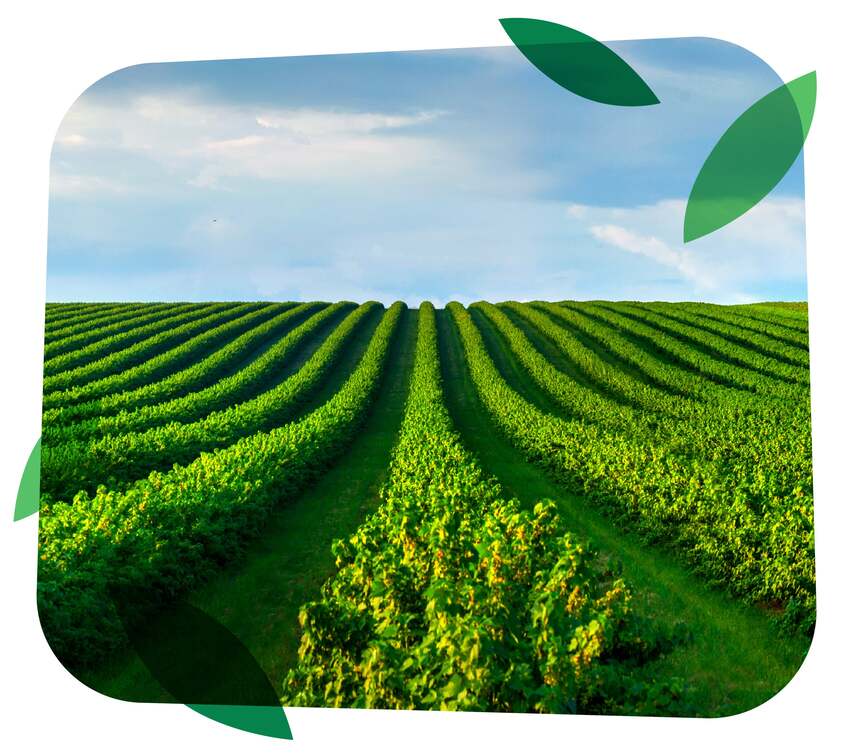Annual crop, grown in dry climates, traditionally during the post-rainy season in South and Southeast Asia; during the winter rainfall season in West Asia, Middle East, and South Mediterranean Region and in springtime in North America and North Mediterranean. There are two main groups of chickpea – desi and kabuli – mainly distinguished by seed size, shape and color. The two types have different production requirements, markets and end-uses.
winter rainfall season in West Asia, Middle East, and South Mediterranean Region and in springtime in North America and North Mediterranean. There are two main groups of chickpea – desi and kabuli – mainly distinguished by seed size, shape and color. The two types have different production requirements, markets and end-uses.
Chickpea is the largest produced food legume in South Asia and the third largest produced food legume globally, after common bean and field pea. Chickpea is grown in more than 50 countries. India accounting for 64% of the global chickpea production and other major chickpea producing countries include Pakistan, Turkey, Iran, Myanmar, Australia, Ethiopia, Canada, Mexico and Iraq.
Growth conditions:
Chickpea is harvested 2.5-6 months after sowing (depending upon cultivars and latitude) at maturity for seed threshing. Preferably grown on clay loam to sandy loam soils, well-drained, pH>7, but is often confined to poor lands and heavy black or red soils.
Needs adequate soil moisture during germination and seed development. Well-drained soils are best suited for chickpea production, the crop does not tolerate wet soils and water logging can result in a poorly developed root system. When dry conditions are encountered later in the season, the plant may not be able to obtain adequate moisture and nutrients to meet its needs. It is generally unirrigated, but the area under irrigation is increasing due to responsiveness to appropriate water management.
Nutrient requirements:
one ton of chickpea grain remove
The chickpea fertilization program depends on the nutrient status of the field, and thus, vary from field to field and the fertilizers amount should be determined based on the results of soil test. General chickpea nutrient recommendation is 20–30 kg nitrogen (N) and 40–60 kg phosphorus (P) and 17 to 30 kg K2O per ha.
N- Chickpea can fix 60 to 80 per cent of its nitrogen requirement through nitrogen fixation. small amounts of starter nitrogen may help seedlings remain healthy and vigorous during the period of early development until nodulation kicks in which is approximately three to four weeks after germination.
P- Phosphorus is an important plant nutrient for chickpea because it has a relatively high requirement for the nutrient. Sufficient soil phosphorus is required for nitrogen fixation and promotes earlier maturity. Phosphorus promotes the development of extensive root systems and vigorous seedlings, good nodule development and more uniform maturity. Chickpeas also respond to phosphorous fertilizer with higher yields and larger seed size.
K- Chickpeas consume large amounts of potassium and these amounts removed by the crop must be returned to the soil to prevent future soil potassium deficiencies. Potassium is a key nutrient in the plant's tolerance to stress, such as high/low temperatures, drought, disease, and pest occurrences. Since chickpea is normally cultivated in relatively poor soil residual soil moisture, an application of 30 kg K2O/ha-1 is recommended for optimal growth, good quality, increase of yield, improvement of soil fertility and a maximum net profit.
Micronutrients- Micronutrients deficiencies can limit achieve high yields and micronutrients application is recommended. The important micronutrients for chickpea include sulfur (S), zinc (Zn), iron (Fe), boron (B) and molybdenum (Mo). The requirements of these micronutrients vary from field to field and should be determined based on the results of soil analysis.
References
CHICKPEA PRODUCTION: NORTHERN REGION [Online] // PULSE Australia. - 1 15, 2016. - 9 2, 2021. - https://www.pulseaus.com.au/growing-pulses/bmp/chickpea/northern-guide.
Gaur et al. Chickpea Seed Production Manual [Report]. - Patancheru 502 324, Andhra Pradesh, India : International Crops Research Institute for the Semi-Arid Tropics, 2010.
Goud, V. V., et al. "Response of chickpea to potassium fertilization on yield, quality, soil fertility and economic in vertisols." [Article] // Legume Research. - 2014.
International Fertilizer Industry Association "World fertilizer use manual." [Book]. - BASF Agricultural Research Station, Limburgerhof, Germany : [s.n.], 1992.
Saskatchewan Pulse Growers Chickpea Crop Production Manual [Report]. - 2011.




